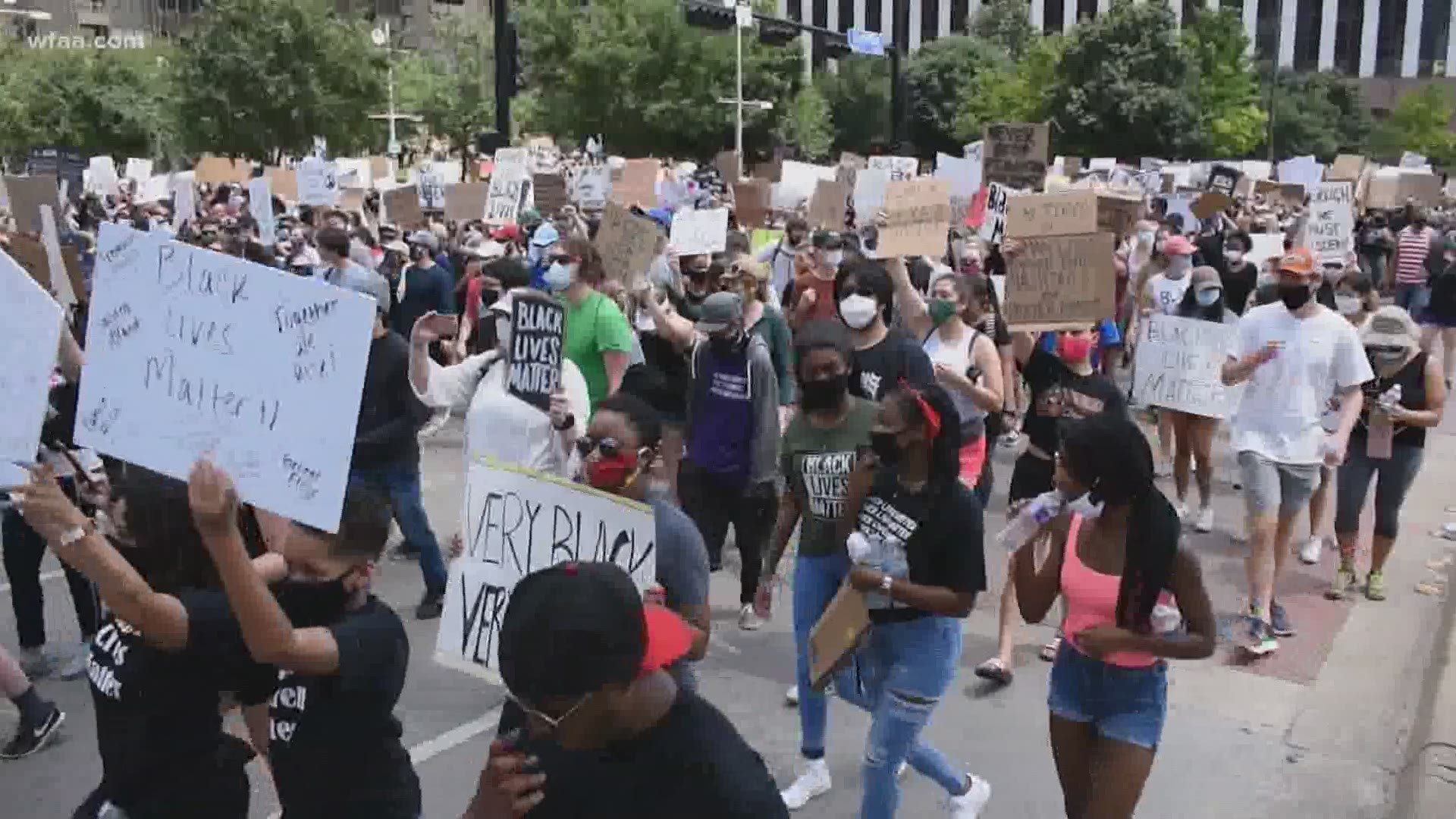The above video is from protests on June 1.
A "critical self-analysis" produced by the Dallas Police Department details the "errors, miscalculations and shortcomings" of the police response to protests in late May and early June.
The 85-page report details the most intense days of protesting in Dallas that ended with hundreds of demonstrators cornered by officers on the Margaret Hunt Hill Bridge. Like in cities across the country, people demonstrated in Dallas to call for police reform after George Floyd died under the knee of a Minneapolis police officer.
The "after action report" analyzed the protests and police response from May 29 to June 1. The report will be presented during a special-called public safety committee meeting on Tuesday.
The report was released late Friday and was published days after Dallas City Council member Adam McGough called the meeting and requested a full report on the police response to the protests.
"I am deeply concerned about the inexplicable use of excessive force in several circumstances and lack of requisite planning and strategies to keep our community and protestors safe," McGough wrote in a memo to City Manager T.C. Broadnax and Dallas Police Chief Reneé Hall.
The police department report states that the demonstrations "were unlike any protest ever seen" by Dallas officers.
"Tensions escalated quickly and the men and women of the Dallas Police Department overcame significant challenges and violence directed towards them in order to ensure the safety of event participants, uninvolved bystanders and themselves," the report says.
The document says that two civilians had "significant injuries" and six officers needed medical attention during the four days of protest. A police horse also sustained an injury, according to the report.
In June, a judge granted a temporary restraining order telling Dallas police to stop using "less lethal" weapons and other crowd control devices, such as tear gas and flashbangs.
Two people named in a lawsuit against the City of Dallas said they were injured during the protests. One, Vincent Doyle, said he was shot in the face with what he believes was a "sponge round" on May 30.
In the report from police, officials were concerned about "violent rhetoric on social media" that day.
The analysis says the demonstration started "peacefully" but says the crowd grew and "protestors [sic] became more aggressive."
The report says some people came to the demonstration wearing goggles, helmets and pads. It says some people started throwing gas canisters back at officers.
Margaret Hunt Hill Bridge
On June 1, protesters moved onto the Margaret Hunt Hill Bridge, where hundreds of people were detained for hours.
The police chief initially said she would file misdemeanor criminal charges against 674 people for obstructing the thoroughfare.
"If you break the law, we will arrest you," Hall said the day after the demonstration.
But she later reversed that decision.
“I strongly believe we made the right decisions to deter and disperse the large crowd on the bridge,” Hall said in a written statement days later.
In the report released late Friday, police officials said protesters were told to stay off the bridge.
"The crowd disobeyed all lawful orders given by licensed peace officers and began marching past the officers and police cars," the report says.
Protesters there that night have disputed the Police Department's portrayal of events, saying that they were funneled and then trapped on the bridge.
The report says officers aimed pepperball launchers at the crowd "to create a barrier and protect themselves from the assaults."
It claims the crowd threw items at officers.
"As the assaults continued, multiple less-than-lethal rounds were deployed into the crowd in an attempt to stop the assaults," the report says.
The department received 50 use of force complaints after the protests.
What's next
The report says ineffective communication hindered officers' responses the days and nights of demonstrations.
It says that officers were given conflicting orders through in-person, cellphone and radio communications from commanders.
"These directions, although well-intentioned, interrupted the ability of the incident commander and the command post to track resources," the report says.
The analysis recommends upgrading radio communications to better interact with other local and state or federal law enforcement.
The report also recommends clearly defining roles for commanders before planned events, like the demonstrations that took place in Dallas after Floyd's death.
The Department also banned directly firing pepperballs at people, though indirect firing is still allowed.
The use of less-lethal "stingers" on a crowd will also be prohibited. But officers can use the sponge guns in one-on-one situations "when sure of their target and background."
Another policy change includes the previously announced requirement that officers intervene when another officer uses excessive force.

